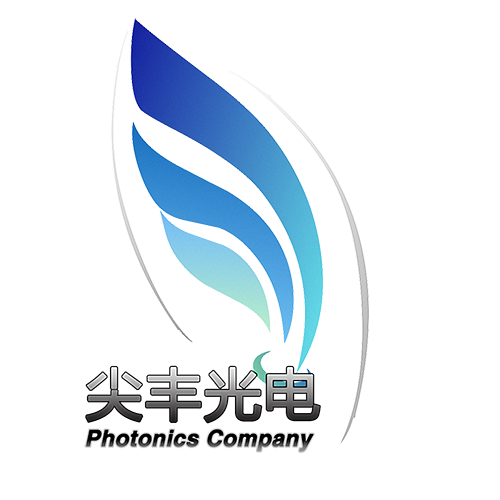
-
 English
English -
 简体中文
简体中文
Categories
- Laser
-
Light source
- Laser diode
- laser Source
- Benchtop ASE Light Source
- SLD model
- SLD light source
- Visible Fiber Lasers
- Erbium Broadband Sources-Dual Band
- Raman Fiber Amplifiers
- Micro Broadband Source
- Benchtop EDFA
- S-band Optical Amplifier (TDFA)
- ASBN-D130/230 deep UV Deuterium Light Source Assembly
- ASB-XE-175 Xenon Fiber Optic Light Source
- ASC Series Spectral Calibration Lamps and Assemblies
- AST/ASTN series wavelength tunable light sources
- ASBN-W High power Tungsten-Halogen Light Source Series
- Picosecond
- ASBN-DW-MINI Miniature hybrid light source
- optical fiber amplifier
- Multi line laser
- Laser detection
- Information optics
- THz
- Fiber compenent
- Laser Crystal
- Laser modulation
- Laser imaging
- Laser Components
- Fiber Fused Biconic Tapering System
- Instrument
- Optics
- 2um Fiber compenent
- Optomechanics
- Lab Consumable
- Optical fiber testing instrument
- agent
Solution
- 光纤激光器的工作原理及其发展前景
- 激光切割异型工作的难点分析
- 光学斩波器及原理
- 空间应用的紫外激光器寿命论证
- wavelength-division-multiplexers
- 拉曼光纤放大器
- Introduction to Fluorescence Filters
- General Introduction to Raman Spectroscopy
- How does a SAM™ work ?
- 激光干涉仪常见故障处理方法
- 盘点光纤传感器四十年发展史
- 空间光调制器简介及其应用
- 什么是空间光调制器
- THz 技术及其应用
- 光学相干断层扫描技术
- Four-Point Probes and Resistivity Testing Equipment
- Infrared Spectroscopy
- AO-OCT Comes into Focus
PRODUCTS
- Thorlabs optoelectronic products agents
- Spectralproducts
- Nethis
- Protemics GmbH
- andover Filters
- Eksma Optics
- EKSPLA
- optical passive components
- Schafter+Kirchhoff
- Electrophysics
- electrooptic IR VIEWERS products
- ALPHALAS DPSS Lasers
- QPhotonics
- Superlum products
- edmund products
- sartorius products
- Tydex Tera Hertz products
- Wasatch Photonics products
- Optromix Company
- About Best Scientific
- Qontrol Systems LLP
- HQ Graphene High Quality 2D Crystals
- iXblue intensity modulators
- Newlight Photonics
Technical document
- Machine Vision
- Optical CoherenceTomography
- Terahertz
- Photoelectric detection technology
- Optical fiber device
- Photodiode Tutorial
- Optical industry and photography industry common English abbreviations
- 高精度纯相位液晶空间光调制器的研究
- 中国计划建造全球最大直径射电望远镜
- spectrometers
- Light source / xenon lamp / mercury lamp light source
- Laser Range Finders
- 激光冷却的原理和技术进展
- Research of the phase-only modulation characterization of a liquid crystal spatial light modulator
- 基于空间光调制器的飞秒激光并行加工技术研究
- Research of Fresnel Incoherent Correlation Digital Holography Based on SLM
- 【Thorlabs教程】氦氖激光器
- OCT Image Gallery
- 光学滤光片的作用原理及应用
- 半导体泵浦与灯泵浦激光器在打标上的对比
- 如何选取激光功率计和能量计
- 液晶空间光调制器的研究
- Thorlabs太赫兹教程
- 【Thorlabs教程】激光扫描显微镜
- Principle of spatial light modulator
- 光隔离器介绍
- Survey on Methods and Systems of Color Holographic Display
- Progress on the terahertz wave radiation properties of Photoconductive Antenna
- 光无源器件(optical passive components)种类及原理
- The main functions of spatial light modulator
Introduction to Fluorescence Filters
Introduction to Fluorescence Filters

Optical fluorescence occurs when a molecule absorbs light at wavelengths within its absorption band, and then nearly instantaneously emits light at longer wavelengths within its emission band. For analytical purposes, strongly fluorescing molecules known as fluorophores are attached to biological molecules and other targets of interest to enable identification, quantification, and even real-time observation of biological and chemical activity. Fluorescence is widely used in biotechnology and analytical applications due to its extraordinary sensitivity, high specificity, and simplicity.
Most fluorescence instruments, including fluorescence microscopes, are based on optical filters. A typical system has three basic filters: an excitation filter (or exciter), a dichroic beamsplitter (or dichromatic mirror), and an emission filter (or barrier filter). The exciter is typically a bandpass filter that passes only the wavelengths absorbed by the fluorophore, thus minimizing excitation of other sources of fluorescence and blocking excitation light in the fluorescence emission band. The dichroic is an edge filter used at an oblique angle of incidence (typically 45°) to efficiently reflect light in the excitation band and to transmit light in the emission band. The emitter is typically a bandpass filter that passes only the wavelengths emitted by the fluorophore and blocks all undesired light outside this band – especially the excitation light. By blocking unwanted excitation energy (including UV and IR) or sample and system autofluorescence, optical filters ensure the darkest background.
Most Semrock filter sets are high-brightness and high-contrast sets. These filter sets strike a balance between highest possible brightness while maintaining high contrast and are the best choice of filters under standard imaging conditions. In situations where the signal level from a sample is low, filter sets with wider passbands enable maximum signal collection efficiency. That is why studies such as the imaging of single molecules typically utilize a filter set with a wide passband or a long pass emission filter. For these studies, it is important to maintain very low background autofluorescence signal by utilizing strict sample preparation protocol.
Filter sets with narrower passbands are preferred options when imaging a sample labeled with multiple fluorophores. Narrower passbands reduce crosstalk by allowing only the strongest portion of the fluorophore emission spectrum to be transmitted, reduce autofluorescence noise and thus improve the signal-to-noise ratio in high background autofluorescence samples. Such filter sets are ideal for samples with ample fluorescent signal level.




